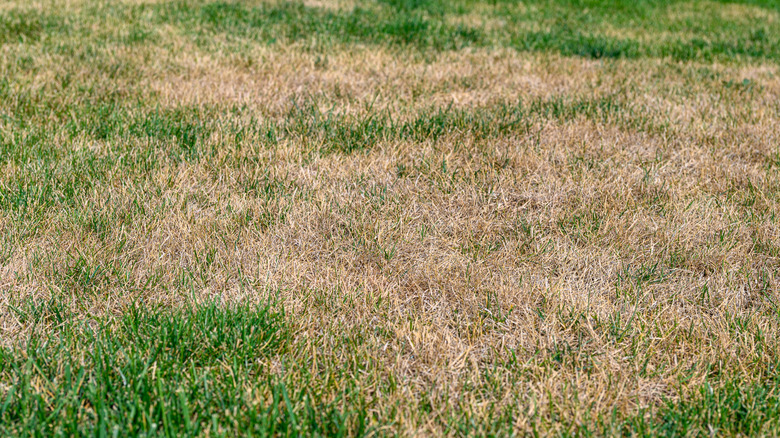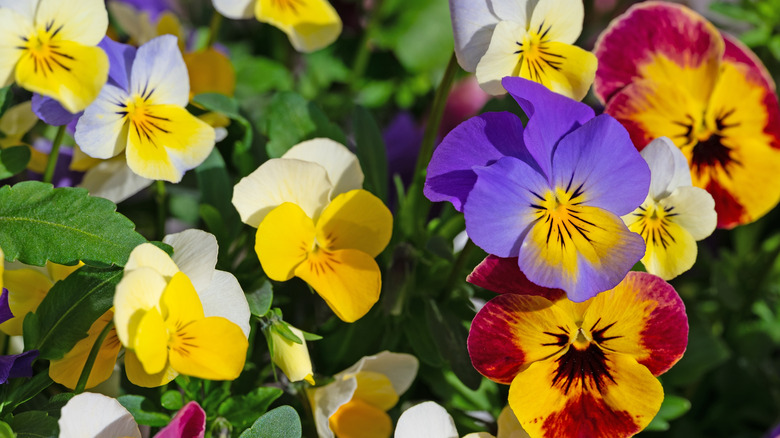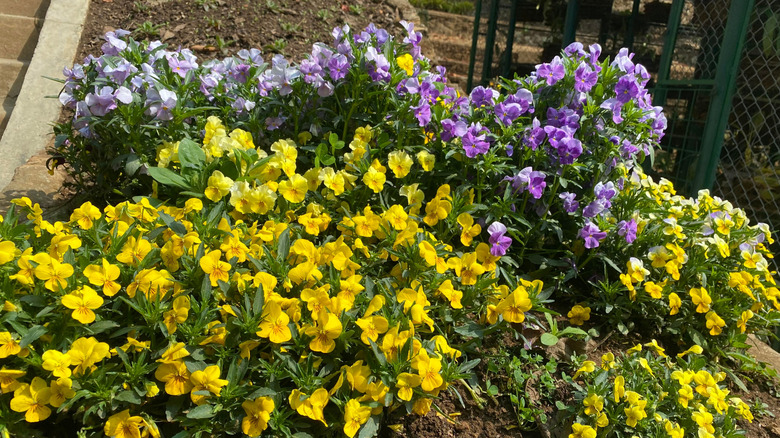The Easy-Care Ground Cover To Consider Planting If Your Grass Won't Stay Alive
When one dreams of the quintessential white picket fence, the image of a vibrant, freshly mown grass lawn is usually quick to follow. But like the hidden costs of buying a home, the time and effort that it takes to maintain such a lawn is often a shock to blissful daydreamers. Not to mention that even if you care for your lawn religiously, you may live in an area that just isn't grass-friendly and, despite your best efforts (and dollars), you are left with a lawn that falls short of expectations. If this is the case, or if you are looking for ground cover that is not only easier to maintain but also provides a better benefit to the surrounding ecosystem, it may be time to ditch the 'grass is greener' mentality.
Hunker spoke exclusively with garden expert and creator of Homestead and Chill Deanna Talerico, to get insight on an alternative. Her recommendation? Viola cornuta a.k.a. horned violets. "Horned violets are a unique, attractive, and low-maintenance ground cover option in gardens with temperate weather and good consistent moisture," said Talerico. Although they can handle full sun when temperatures are lower, she noted that they will not do well in hot and dry climates, though they are said to do alright in zones 1-9, which covers the majority of the U.S. (save for some of the most southern regions). When planted in the correct climate, however, Talerico says, "These hardy perennials will tolerate full sun when it's relatively cool out, but may grow best in partial shade." She also noted that they can be planted as annuals if you so wish.
What they look like and why you should plant them
The flower of the horned violet is a majority deep violet purple with a bright yellow center. But while Talerio exclusively told Hunker that the plant will bloom in spring, the flowers won't last through the summer as temperatures rise. To keep them blooming as long as possible however, she states, "Routine light pruning or dead-heading of horned violets can help promote new growth and extend their blooming season."
It's not just their beauty or low maintenance that makes these flowering plants worth a shot. In addition to their happy little faces, they also give off a lovely sweet smell. This fragrance isn't just an amuse-nez for humans, it also serves to draw in local wildlife. Once the flowers are blooming, Talerio says. "Then, the flowers offer a valuable source of pollen and nectar for bees and butterflies, helping to support a healthy pollinator population and biodiversity in the garden!"
What to consider before investing in a lawn of violets
Although horned violets are generally pretty low maintenance — especially one established according to Talerio— there are still some factors you may wish to consider before deciding to make a full changeover of your ground cover. Talerio exclusively told Hunker that they are notorious for attracting common garden pests that are also attracted to moist and shady conditions — the preferred growing conditions of the violet.
Talerio named snails and slugs as the biggest perpetrators. While these slimy little guys might seem harmless, they are actually known to be incredibly destructive to gardens and landscapes, mostly due to their feeding habits which leave large irregular holes in the leaves of plants. If you do end up with an unwanted gathering of gastropods, Talerio reassures that there is more than one way to keep them at bay. "Thankfully, there are a number of non-toxic ways to manage them, such as by using DIY slug beer traps- which I also bait with sourdough starter when I don't have beer on hand!"


